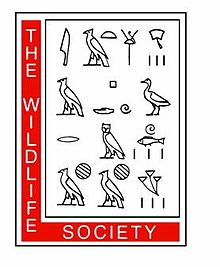
The Wildlife Society Position Statement on Invasive Plants and Animals
An invasive species is defined by the multi-agency National Invasive Species Council1 as one that is “1) non-native (or alien) to the ecosystem under consideration and 2) whose introduction causes or is likely to cause economic or environmental harm or harm to human health.” This position statement uses invasive species as an umbrella term referring to alien, exotic, nonindigenous, and non-native species.
The effects of invasive plant and animal species and their costs to society are becoming of more concern every year. Effects include negative impacts on biological diversity (especially species at risk), productivity, environmental integrity, and wildlife and human health. Costs to society are both in dollars spent and opportunities lost. Scientific and popular literature is showing a large variety of consequences from both purposeful and accidental introductions, indicating growing concern and recognition of the problem.
While there remain examples of introductions of non-native species that have produced benefits, e.g., for biological control, soil stabilization, increased recreational opportunities, and agricultural programs, many more examples of negative consequences can be found. If and when purposeful introductions are being considered in the future, the beginning assumption should be that the risk is great unless proven otherwise; well-designed and extensive quantitative analyses of the risks and uncertainties should be required.
The policy of The Wildlife Society regarding invasive plants and animals is:
- As a first and guiding principle, The Wildlife Society will promote the maintenance of biological diversity and ecosystem integrity and oppose the modification and degradation of natural biomes by invasive species.
- Encourage programs to monitor invasive species that are capable of modifying native wildlife habitat and affecting biological diversity, to determine whether they are causing significant ecological, economic, and social problems or have established themselves in modified ecosystems but cause minimal identifiable impacts.
- Support appropriate control programs of invasive species that are cost effective and exhibit results within a reasonable time frame, without causing additional perturbations.
- Discourage the further introduction of invasive species for any purpose, including agricultural diversification, pet trade, and genetic engineering.
- Insist on strict husbandry standards for those invasive species already present in agricultural diversification programs to prevent their accidental escape into the wild and consequent degradation of wildlife habitat.
- Accept the few apparent non-conflicting successes of past non-native species introductions (e.g., Ring-necked Pheasant) that have helped to promote conservation programs (e.g., Conservation Reserve Program) intended to protect native plants and animals.
- Host forums and information sessions to educate the public about invasive species and their negative ecological and economic impacts on natural ecosystems, particularly species at risk and their habitats.
- Encourage the passing and enforcement of effective new laws and regulations at the state and federal level that would help control the spread of invasive species.
- Encourage research by public and private agencies and organizations to control, minimize, or eliminate the impact of invasive species.
1National Invasive Species Council, National Invasive Species Management Plan (www.invasivespecies.gov).
Approved by Council September 2009. Expires March 2016.












